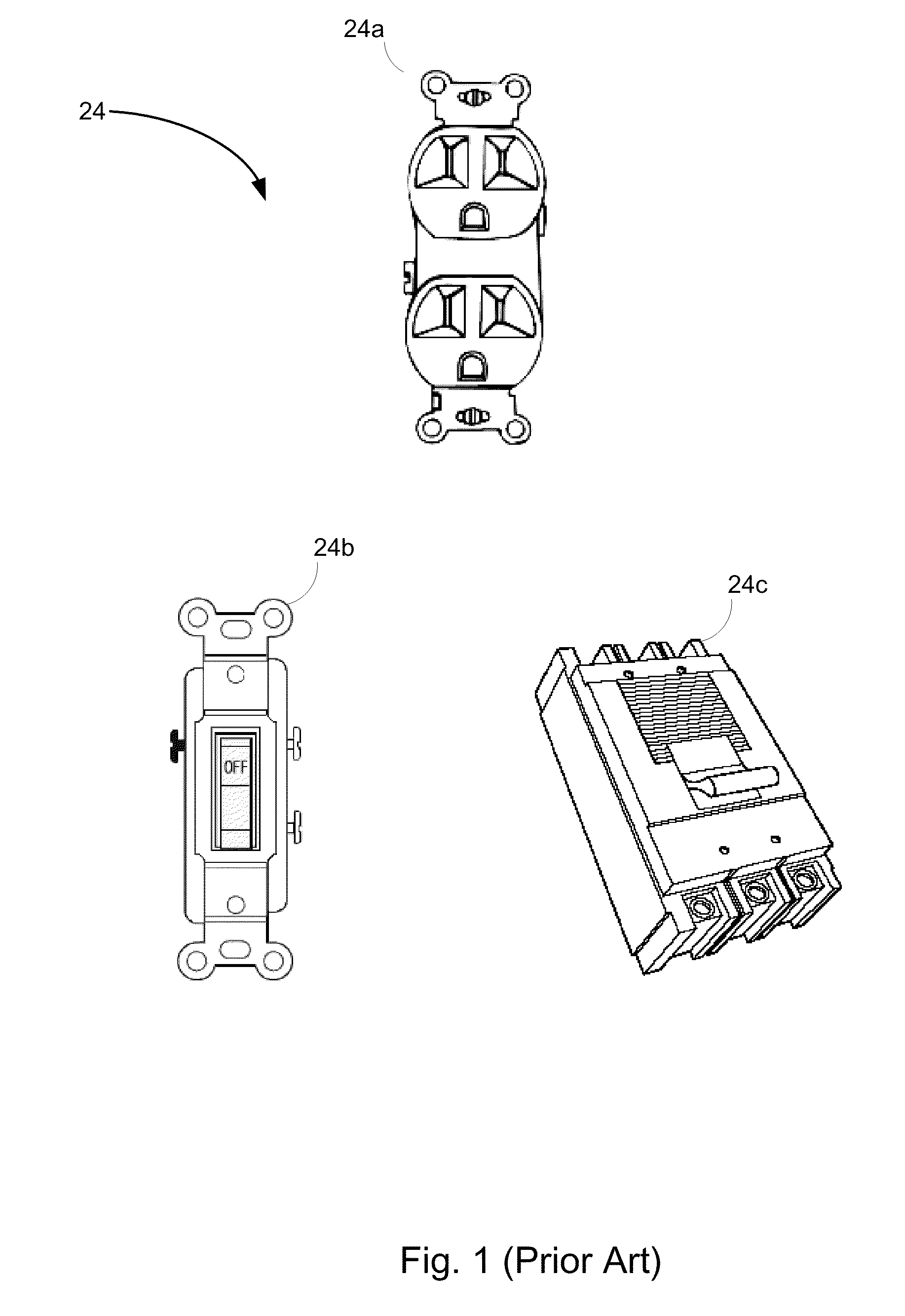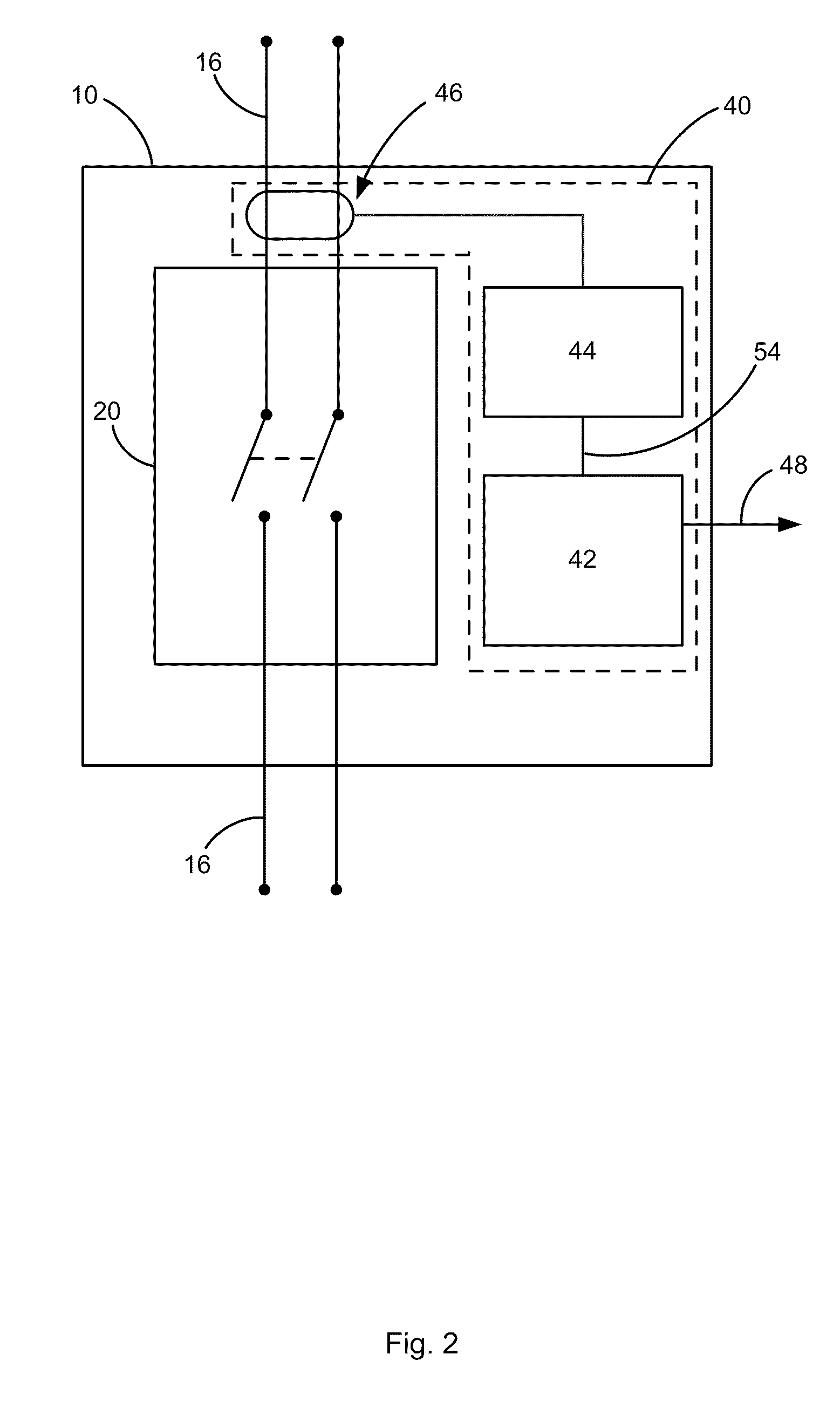Smart Electrical Wire-Devices and Premises Power Management System
a technology of smart electrical wire devices and power management systems, applied in non-electric variable control, process and machine control, instruments, etc., can solve the problems of expensive proprietary hardware and software components, not enabling the user to remotely control the device, and not enabling the user to remotely monitor the device in a manner analogous, so as to achieve the effect of maximizing the effectiveness of the system
- Summary
- Abstract
- Description
- Claims
- Application Information
AI Technical Summary
Benefits of technology
Problems solved by technology
Method used
Image
Examples
Embodiment Construction
[0029]Referring now to the drawings, the details of preferred embodiments of the present invention are graphically and schematically illustrated. Like elements in the drawings are represented by like numbers, and any similar elements are represented by like numbers with a different lower case letter suffix.
[0030]Referring now to FIG. 2, a preferred embodiment of the present invention is a Smart Wire-Device 10. The Smart Wire-Device 10 is intended to be installable in an electric power line 16 at a consumer premises, i.e., on the drop-side of the electrical utility service at an end consumer's location (premises). An end user's location is the consumer's business premises, residence, shop location and the like. In this embodiment, the Smart Wire-Device 10 is used for measuring an electrical property of the consumer premises electric power line 16 at a point in the power line 16, and to communicate that measurement to an external device (such as a receiver / processor, computer device 1...
PUM
 Login to View More
Login to View More Abstract
Description
Claims
Application Information
 Login to View More
Login to View More - R&D
- Intellectual Property
- Life Sciences
- Materials
- Tech Scout
- Unparalleled Data Quality
- Higher Quality Content
- 60% Fewer Hallucinations
Browse by: Latest US Patents, China's latest patents, Technical Efficacy Thesaurus, Application Domain, Technology Topic, Popular Technical Reports.
© 2025 PatSnap. All rights reserved.Legal|Privacy policy|Modern Slavery Act Transparency Statement|Sitemap|About US| Contact US: help@patsnap.com



